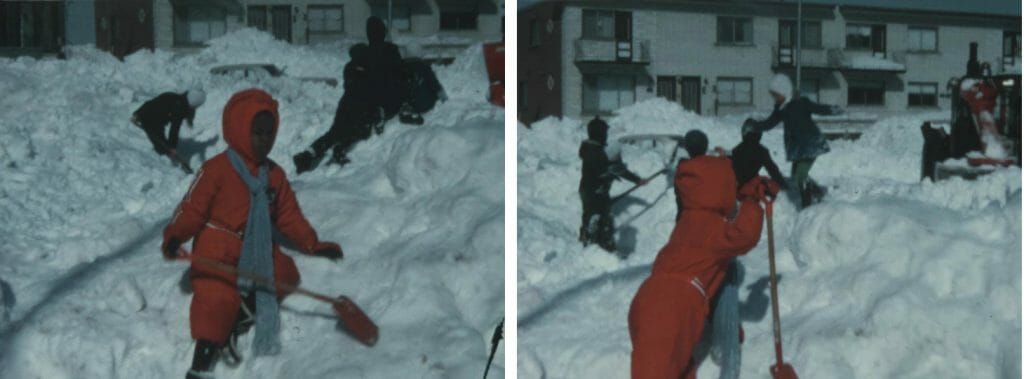New Toronto film project aims to preserve the pasts of Indigenous and visible minority communities
A look inside the Home Made Visible project
Emily Macrae

A child playing in a snowbank. A woman cutting a cake. A man digging a car out of a snowdrift.
At first glance, these are common Canadian moments. But look closer and they become celebrations in the daily life of any Canadian family. Whether they are new to the country, first- or fifth-generation Canadians, these are things we all share.
Elizabeth Mudenyo is the special projects manager at the Regent Park Film Festival, which leads free, community-driven programming in Toronto. Reflecting on the representation of people of colour she says: “Whenever we see archival material, it’s usually centred around whiteness, especially in Canada.”
Mudenyo is working to change that. In partnership with Charles Street Video and York University Libraries, she is coordinating Home Made Visible, a project to digitize home movies created by members of visible minority and Indigenous communities.
The scenes from a snowy day and a family party are just a few examples of footage that has been transferred from video and film formats to digital files so far. Although the Regent Park Film Festival is rooted in Canada’s oldest and largest social housing community, Mudenyo sees the national archival project as a natural fit because “we are an organization run by people of colour who create content and platforms for people of colour to share their own stories.”
Home Made Visible responds to both technological and social change. By digitizing home movies, it restores access to personal stories that risk being lost as formats like VHS and 16mm become harder to enjoy at home. By allowing participants to choose which portions of their footage they would like to contribute to the archives at the York University Libraries, it ensures that members of Indigenous and visible minority communities remain in control of how they are represented and remembered.
This process tackles the underrepresentation of people of colour in Canadian archives. For Mudenyo, “being a part of our public archives can actually shape how we view the past, how we view communities and people, and how we shape our future.”
Home Made Visible also opens dialogue about analogue artefacts in a digital world. A second component of the project commissions seven artists across the country to create work that critiques the notion of archives. Nadine Arpin is a Two-Spirited Métis artist based in Sioux Lookout, Ont. As one of the commissioned artists with Home Made Visible, she is working on a documentary-style film that tells the story of a local Zamboni driver who emigrated from Colombia. “Archival and found footage is actually a staple of my work,” explains Arpin. For her, the commission is an opportunity to tackle stereotypes about small-town life: “When you see the same faces every day, inclusiveness is imperative.”
It’s a reality Arpin rarely sees reflected in depictions of northern communities. Finding little archival content at the local public library, she put out an open call to residents of Sioux Lookout and is constructing the commission from shoeboxes full of Super 8 footage provided by a community member.
From shovelling snow in the suburbs to shining the ice in Sioux Lookout, this project aims to shed a light on underrepresented communities and how they both contribute to and challenge national narratives.